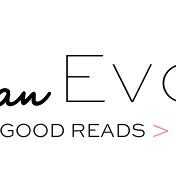Since I have become aware of all the chemicals that are in our day to day products, I've become just a little obsessed with cleaning out everything and replacing with natural products. This is my personal choice and I don't want to force anyone to follow in my steps, but I think it's important to spread my knowledge and hopefully inspire others.
So my Friday night last week consisted of shopping at Target. I went in looking to purchase an all natural laundry detergent and I ended coming home with all of this.
I got glass cleaner, detergent, deodorant, dish soap, hand soap, cosmetics and dishwasher soap. I have to admit I actually enjoyed shopping, especially since I was able to use my new app, Good Guide, (free on the app store) which helps you find safe, healthy and green products using expert ratings for popular food, personal care products, household chemicals and electronics. If you want more information about this app click here.
So far, I've used pretty much all the products and I'm pretty content. The deodorant doesn't have the girly scent like my prior deodorant, but fragrance equals chemicals and I'm okay kicking fragrance to the curb to avoid chemicals leaching into my body. Burt's Bees lip products are phenomenal and leave my lips smooth all day. They can range between $6 - $9 however, it's still cheaper than buying from MAC.
Method dish soap, laundry soap are pretty good and I love that all I have to do is pump and I'm done. 4 pumps for each and the heat activated dryer fabric softener is pretty awesome cause instead of sheets it's a spray. It's so convenient and ecofriendly. All products are plant based and biodegradable and they smell and work GREAT! These products are a few dollars more than Gain and Tide, but the extra few bucks are worth getting chemical free products that are natural - my opinion.
Using biodegradable products and natural products are just one step in my "Go Green" journey. Saving the planet and being more Eco friendly is something we can all contribute to.
From Treehugger.com
Why Go Green? Top Ten Tips
- Real food is fuel for the body -- and the planet.By following the green eaters' mantra -- eat seasonal, local, organic foods -- you can enjoy fresher, tastier foods and improve your personal health. According to one study, organic milk has 68 percent more beneficial Omega-3 fatty acids than conventional milk. Making green food choices also has global consequences. Buying local means supporting the local economy and reducing the greenhouse gas emissions required to get food from its origin to your plate. Buying fresh food means reducing packaging and energy used for processing. Choosing organic foods means helping promote organic agriculture and responsible land use. To learn more check out How to Go Green: Eating.
- The average woman absorbs more than 4 pounds of cosmetics during her lifetime. Guys, you're not off the hook.Your skin -- the body's largest organ -- absorbs up to 60 percent of the products you put on it every day, from soaps to shampoos to sunscreens. Considering that most of us use about 10 different products daily,that can really add up. Choosing green personal care products often means using plant-based ingredients in place of petrochemicals, preventing these chemicals from being absorbed into your skin. Learn how to keep your grooming regimen on the level with our How to Go Green: Women's Personal Care guide and Know Your Cosmetics Ingredients: Top Ingredients to Avoid.
- Making stuff takes lots (and lots and lots) of energy.Every object you own -- your furniture, your clothing, your beer cans, your stuff -- comes from somewhere; every object has an environmental impact. Nothing simply comes from "the store." To help mitigate the footprint of your material life, choose goods made from green (or greener) materials, such as sustainably harvested wood, organic cotton, or repurposed and recycled materials. Your choices will help protect forests, habitat, clean water and biodiversity; ensure sustainable land-use practices; and reduce the amount of waste clogging up our landfills. Buying less stuff and second-hand stuff helps achieve this goal, too. See our How to Go Green: Furniture, and BuyGreen Guides for more info on sourcing these products.
- Clean, renewable power is already available to everyone.We use electricity to power our lights, computers, and televisions, but what happens before you flip the switch? Your electricity has to come from somewhere; more than half America's comes from coal-burning power plants, which also happen to be the country's largest source of air pollution. By signing up for a renewable energy program through your local utility, generating your own power, or purchasing renewable energy credits (also known as "green tags"), you contribute to our collective capacity for generating more clean power from wind, solar, and other sources and you help reduce demand for energy from more polluting sources. Learn more about how to make your electrical footprint lighter in our How to Go Green: Electricity guide.
- Better transportation means less global warming.Anytime you choose to walk, ride a bike, or take public transportation, you reduce (or totally eliminate) the carbon dioxide and particulate emissions created by driving a gas- or diesel-powered car. You'll help slow global warming and help stave off our date with peak oil. Choosing greener options ? such as a train over air travel ? for long-distance trips can immensely reduce your carbon footprint. Get to the nitty-gritty in our How to Go Green: Cars and How To Go Green: Public Transportation guides.
- Nature Recycles Everything. So Should People.Making proper use of the blue recycling bin has become an iconic action. Reducing the amount of stuff we consume is the first step (and the first word in the mantra reduce-reuse-recycle), finding constructive uses for "waste" materials is the second. Why? Nothing is ever really thrown "away" -- it all has to go somewhere. By recycling and reusing, we reduce the amount of waste that sits in landfills (where even biodegradable products often can?t break due to lack or oxygen and sunlight). Recycling materials also saves energy compared to using virgin materials to create new products. Some materials, like aluminum and glass, can even be recycled without being "downcycled," or turned into a product of lesser quality. See our How to Go Green: Recycling guide for more details.
- Your clothing choices impact more than just your appearance.Making clothing involves a large amount of materials, energy, and labor?including the pesticides used to grow crops for textiles, the dyes and water used to color them, and conditions under which laborers work. By choosing eco-friendly clothing ?- say, purchasing organic over conventional cotton, one of the world's most chemically dependent crops, you also choose a better product that is easier on the soil and groundwater. How you care for your clothes ?- using cold water in the washing machine, eco-friendly detergents, and line-drying (at least part of the time) - can all reduce the impact of your wardrobe. Wearing second-hand styles helps diverts traffic to landfills, and in some cases - perhaps undurprisingly -- can be 95 percent more efficient that buying new. Learn more about greener choices in our How to Go Green: Wardrobe and Laundry guides.
- Water is not a renewable resource.Clean water is perhaps the planet's most precious resource, and, with the increasing effects of global climate change, for many regions across the globe, our ability to have enough high-quality H20 on hand could likely to change in the near future. Being water conscious helps reduce strain on municipal treatment systems and ensures there's enough to go around. By shifting away from bottled water, we can reduce global greenhouse gas emissions (from shipping), the energy required to produce (petroleum-derived) plastic, and the volume of waste trucked to our landfills (from empty bottles). Have a peek at our How to Go Green: Water Guide for more details.
- Greener goods are more humane.Just as its required materials and energy, all "stuff" requires another common resource: the human kind. If you opt for green and ethical goods, you are often supporting local and global craftsmen and communities. Supporting "Fair Trade" products and fair labor practices ensures that goods-- from coffee to clothing ? were not born in a sweatshop. Buying goods made in the U.S.A. (and preferably purchased nearby where they were made, which cuts down on transportation costs) means production practices are governed by strict labor laws. Read the How to Go Green: Wardrobe and Coffee & Tea guides for more.
- There's nothing corny 'bout peace, love, and understanding.When Dr. Wangari Maathai won the Nobel Peace Prize in 2004, the awarding committee recognized her accomplishments by saying, "Peace on earth depends on our ability to secure our living environment." Maathai, the founder of the Green Belt Movement (one of Planet Green's NGO partners), has helped the world connect the dots between women's rights, sustainable development, democracy, and world peace -- get the details in the TreeHugger Radio interview with Maathai. The connection between peace and the environment has been cemented by Nobel Prize Laureate Al Gore and the IPCC, who have driven home the points that global climate change is an issue of science, technology, human behavior, ethics and peace, and that one person's actions can truly make a difference. Equating the two -- peace and the environment -- allows us to understand the big picture and the manner in which we're all connected.
website address
The Number One website address Resource on the Internet. Click Here for More Information.







This is very interesting! I have changed out a few things like lotion, tooth paste, deodorant and shampoo....but that's really it. So now, reading the links has made me slightly OCD...lol. I recently saw a documentary that really sadden my outlook on the future because they were talking about how now the wars are over " black gold"-Oil, but later on in the future it's going to over "clear gold" -Water.
ReplyDeleteI think you made it seem simple and not overwhelming...what I take from this is,"one person can make a difference, but together we can make a change" :)